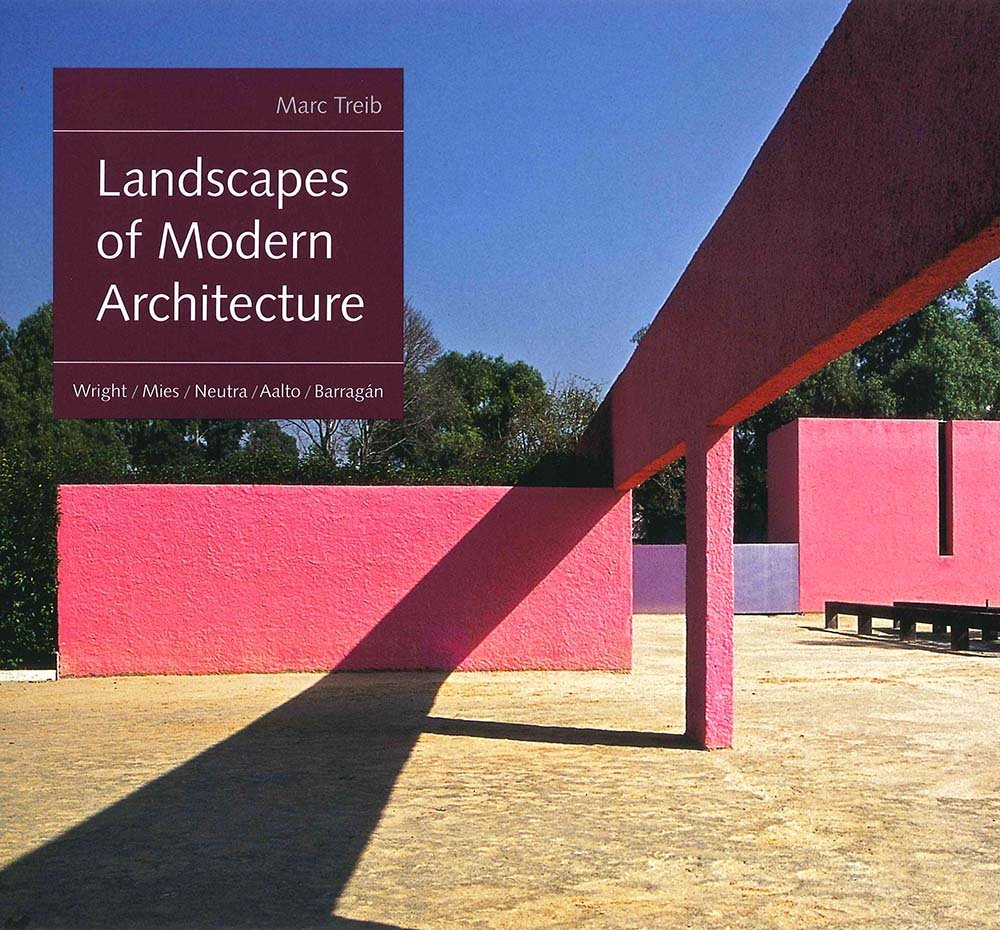Marc Treib
Yale University Press, 2017

Is there still more to know about these architects? Treib demonstrates that there may be, at least in regard to the impact of their ideas concerning nature in the design process. While there are many other detailed descriptions of the work of these masters, including the relationship of their buildings with the land, the book attempts to fill a gap in architectural theory by prioritizing this missing layer through a comparative reading of their distinct approaches.
For Wright, abstract mimesis of nature’s patterns in an organic union , as Treib names it, becomes his work’s legitimate and stimulating inspiration, while for Mies nature is the other, a mere morphological context that the glass architecture frames and converts to the sublime view as Richard Sennett among others, suggested in his book The Conscience of the eye back in the early 1990s. Neutra, through his biorealistic theoretical framework, provides a balanced setting between garden and building, while Aalto’s topographical gestures surround and connect his architecture to the ground. In parallel, he uses the forest as the metaphysical material of the Finnish landscape to create his interiors. Finally, Barragán, an engineer converted to a (landscape) architect, created unique public and private spaces through his search for a Mexican cultural identity.
Treib showcases these artists, avoiding placing them on a clear gradient while he compares extremes (Wright and Mies) and considers hybrids (the rest of architects). By unveiling his subjects’ thoughts through their work, texts, and correspondence, he creates an excellent book that remains open to several interpretations; then, he allows himself a final detailed statement, situating their work in regard to their approach.
This Yale University press book of 268 pages, a result of many years of research and travel, is organized around 128 color and 74 black-and-white illustrations. The drawings are chosen well and the photographs not only confirm the author’s visits to and impressions of most of the buildings, they also serve to accurately frame his inquiry. They never overwhelm the narrative, but only support it. Yet, being strangely common, they reveal “life after publication,” an issue that Treib has always been aware of and intrinsically weaves in with his ideas of landscape and site.
While most of his subjects talk about nature, Treib uses the word landscape in the title of the book. Is it because Treib aims to talk about the work in a clearly projective manner and landscape is a more appropriate term? In the introduction, he admits to using the words site and landscape interchangeably. Is it an intellectual lapsus or an intentional comment for the generic use of these terms within the design praxis? Or is it that both terms, as well as nature, for the author and the architects he examines, in the end, mean the architecture’s surroundings, the form and materials for a future human habitat?
For architecture, nature often means climate as it aims to provide the best conditions for inhabitation. As expected, the architectural language does not engage with larger landscape morphologies or natural processes; Treib, as well as the architects he portrays, pays little attention to this. He demonstrates that, several times, in the life of these select architects, nature becomes the perfect metaphor in a design process based on analogy.
Yet, nature is often “exemplified” through vegetation, when it is not a “setting.” It is often the selection of plants (for example, Wright’s “saguardos” and “oca[o]tillos”), which become objects of affection, a vehicle for creating and engaging with the atmosphere—or to use Neutra’s term, physiognomy—of the site.1 Water, unfortunately, is often objectified in the form of pools and never understood as part of the dynamics of the site, except of course in Farnsworth House and the ideas about sublimating the risk of flood.
Treib, a renowned master of weaving biographical details with key theoretical ideas, evidences that the twentieth-century masters were dealing with their sites in a poetic way, inspired by their conditions, yet often, imposing their language on the landscape. His narrative suggests that sometimes—as, for example, in Wright’s proposal of a “resort undefiled by irrigation” in Arizona in 1928, or in Barragán’s resistance to the individual, detached house in the center of a manicured lawn (instead proposing courtyards with dry gardens)—these architects went beyond a morphological reading of their surroundings and became attentive readers of nature’s performances and appearances. Treib’s always sophisticated interpretations help us conclude that when designers observe the earth’s elements and processes, they can then innovate on design typology and create beauty responsibly.
How to Cite this Article: Goula, Maria. Review of Landscapes of Modern Architecture: Wright, Mies, Neutra, Aalto, Barragán, by Marc Treib. JAE Online. July 27, 2018. http://www.jaeonline.org/articles/reviews-books/landscapes-modern-architecture-wright-mies-neutra-aalto-barragán#/.






